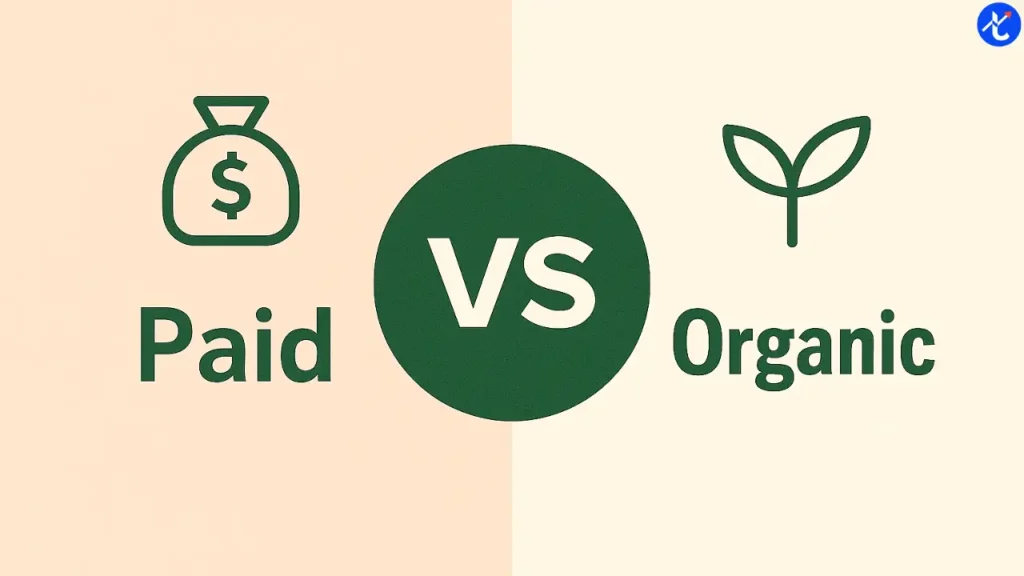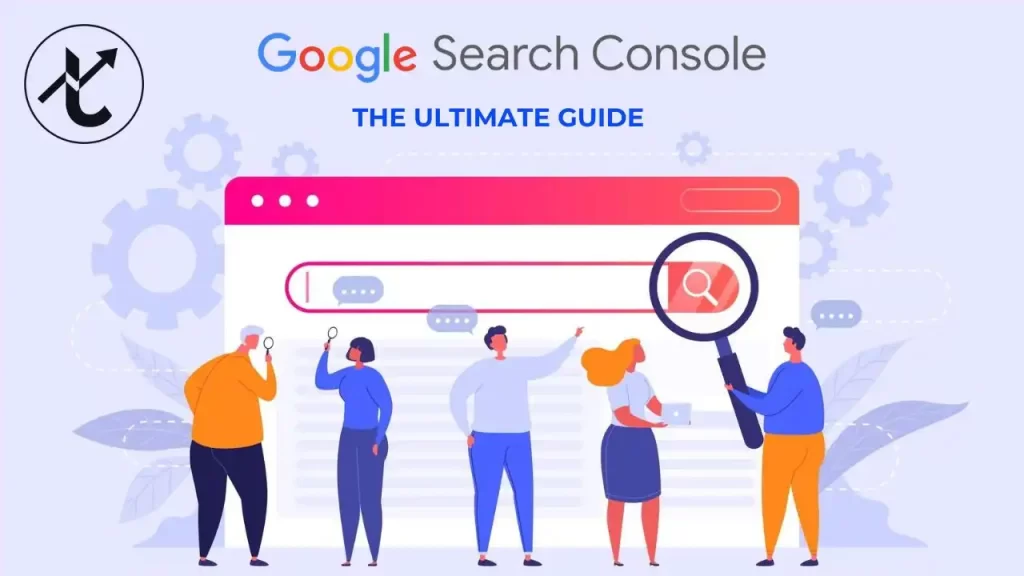When planning your digital marketing, understanding paid vs organic search marketing is a key step. Both paid and organic search bring visitors from search engines, but they work very differently. Paid search means paying for ads (like Google Ads), while organic search happens naturally through strong website content and SEO. To succeed, brands should know when to invest in paid ads and when to focus on organic search optimization. By combining an effective SEO and PPC strategy, marketers can get fast results and build a strong long-term online presence.
Paid vs Organic Search: What’s the Difference?
Paid search, also known as PPC (pay-per-click), is like buying front-row seats on search engines. Your ads appear at the top, immediately visible to shoppers ready to click. It delivers instant traffic and can target specific locations, devices, or audiences. However, it costs money for every click and stops bringing visitors once the budget ends.
Organic search is the natural way people find your website through unpaid rankings. It’s slower to build but brings more trusted, ongoing traffic. It relies on content quality, keywords, backlinks, and site authority. Organic search optimization means working continuously on your website’s SEO to attract high-interest visitors consistently.
| Feature | Organic Search | Paid Search |
| Cost | Free (time & effort) | Pay per click |
| Traffic Start Time | Months | Immediate |
| Long-Term Impact | Strong and lasting | Stops when budget ends |
| Trust & Credibility | High | Moderate |
| Control & Targeting | Less precise | Granular targeting |
Why Organic Search Optimization Matters More Than Ever
Organic search optimization builds brand credibility and authority, attracting visitors who are genuinely interested. When your content answers questions fully and clearly, search engines reward you with higher rankings. Over time, this leads to growing free traffic and stronger customer trust.
Tips for better organic search optimization include:
- Creating helpful blog posts around keywords your audience searches.
- Optimizing meta titles, descriptions, and images.
- Building backlinks from trusted websites.
- Improving page load speed and mobile experience.
- Adding structured data for rich snippets.
A strong SEO foundation means your website becomes a valuable resource, making marketing easier and more cost-effective.
Also Read: The Future of SEO with AI Search Engines
How to Combine SEO and PPC Strategy for Maximum Impact
The best marketers in 2025 combine SEO and PPC strategy to get the best of both worlds. Use PPC for quick wins like launching new products or promotions, where immediate visibility is crucial. Meanwhile, SEO steadily builds your brand’s reputation and brings traffic even when you’re not running ads.
Here’s how to optimize your SEO and PPC together:
- Use PPC data to identify top-performing keywords worth ranking organically.
- Test ad copy and landing pages with PPC before adding them to SEO content.
- Retarget visitors who clicked paid ads with organic email marketing.
- Monitor analytics to allocate spending between paid and organic channels for best ROI.
This hybrid approach helps balance short-term results and long-term growth.
Paid vs Organic Search: Tips to Optimize Your Strategy in 2025
To get the most from your search marketing, follow these expert tips on paid vs organic search optimization:
- Set Clear Goals – Know if you want fast traffic, brand building, or both.
- Research Keywords – Use tools to find SEO-friendly phrases and paid ad targets.
- Create Quality Content – Focus on user intent and helpfulness.
- Use PPC Wisely – Spend more on high-converting keywords and specific audiences.
- Optimize Landing Pages – Make pages fast, clear, and persuasive for both.
- Analyze & Adapt – Regularly check data and adjust your budget and content.
- Invest in Technical SEO – Improve site structure, speed, and security for organic success.
When to Choose Paid Search Over Organic Search (and Vice Versa)
Both strategies complement each other, but sometimes one makes more sense:
Choose Paid Search if:
- You need fast results for a product launch or sale.
- You want precise control over ad spend and targeting.
- You operate in highly competitive markets.
Choose Organic Search if:
- You want sustained, trust-building traffic.
- Your budget is limited initially.
- You aim to build brand authority over time.
Smart marketers monitor performance and switch focus as business goals evolve.
Conclusion:
Understanding paid vs organic search marketing and mastering a balanced SEO and PPC strategy is a game-changer for brands in 2025. Paid search delivers speed and precision, while organic search optimization builds trust and sustainability. Both are essential tools, and by combining them thoughtfully, marketers can drive high-quality traffic, increase conversions, and improve brand credibility.
Invest in creating helpful, expert content for organic growth, and use paid ads to fill gaps quickly. Track your results, adapt your approach, and remember that success is about meeting customer needs effectively—whether through an ad or a helpful article.
FAQ Section
Q1: What is the main difference between paid vs organic search?
Paid search delivers instant visibility through ads you pay for, while organic search brings free, long-term traffic by ranking your content naturally on search engines.
Q2: How does organic search optimization help businesses?
It builds lasting credibility and steady traffic by creating content that answers user questions and follows SEO best practices.
Q3: Should I use SEO and PPC together?
Yes—combining both strategies gives you fast results and long-term growth, letting each support the other.
Q4: Can paid search replace organic search?
Paid search can’t replace organic growth because it stops when you stop paying, but it’s great for fast visibility and targeting specific audiences.




